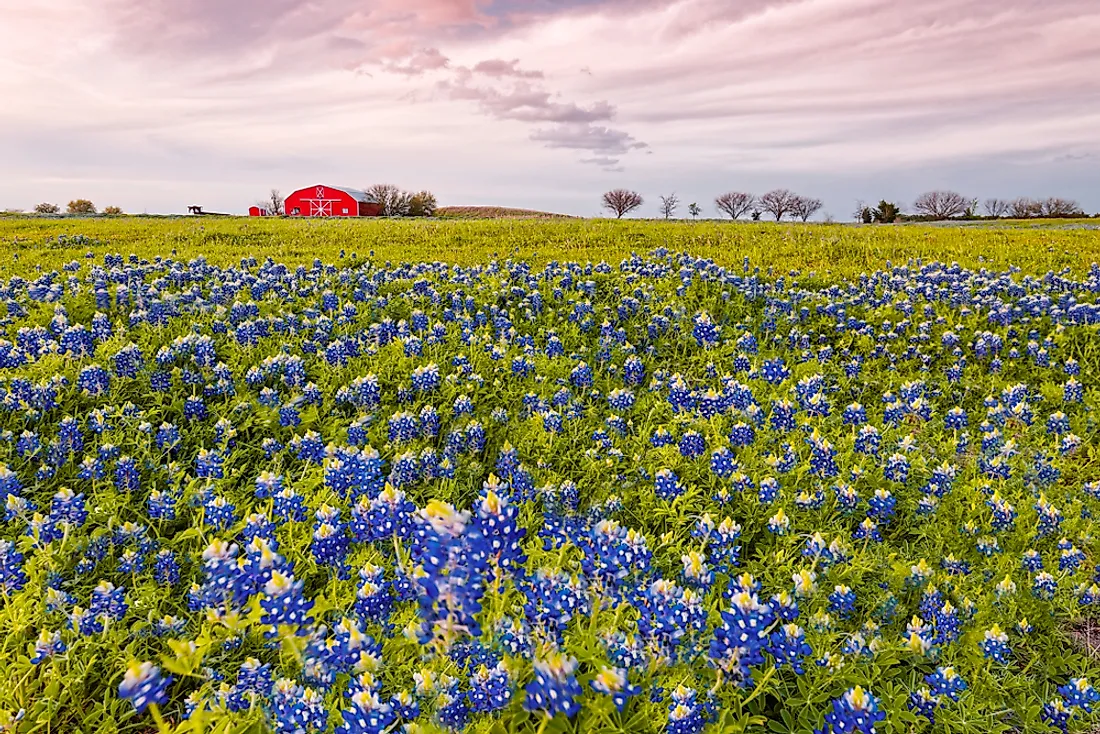What Is The Texas State Flower?

The state flower of Texas is the bluebonnet. Texas officially made the bluebonnet its state flower in 1901. The state considers all the species of bluebonnet as the state’s official flower. Initially, a species of bluebonnet known as Lupinus subcarnosus was the only recognized state flower. However, in 1971, all the other species of bluebonnet were made the state flowers because many Texans found Lupinus subcarnosus scarce compared to other species. The flowers grow on hillsides, roadsides, meadows, raised flower beds, and hanging baskets. Between March and May, the flowers can be seen blooming across uncultivated lands in Texas. The flowers can be toxic if ingested.
Physical Description of the Bluebonnet
The bluebonnet plants are usually short. However, they may grow up to around 60 cm long. The flower appears on the upper side of the plant and is characterized by blue petals which are usually small in size. Sometimes, the petals may be of different shades of different colors such as white. However, blue remains the most dominant shade. The bluebonnet seeds grow in a very hard coat. This is why the seed may take a long period to germinate. The compound leaves of the plant are usually pointed and velvety. The main species of the bluebonnet grow naturally in the wild in Texas. Some of these species are endemic to Texas. To grow the plant domestically, the soil has to be well drained since it cannot thrive in clay based and poorly drained soils. The plants thrive well in warm sunny climates.
Why is the Bluebonnet Texas’ Official Flower?
The bluebonnet flower was selected as the official flower of Texas because most of the species of the flower are endemic to Texas. Also, the plant is also widely available in the state and can be seen blooming almost everywhere. However, before the state’s legislature could settle on bluebonnet as the state flower, a considerable number of Texans supported cactus or cotton boll for the state flower. The supporters of cotton boll insisted on having the flower as the state floral emblem because cotton was the in-thing in Texas at the time. The National Society of Colonial Dames in Texas, which was proposing the bluebonnet as the official state flower, eventually carried the day without a much opposition. The resolution to have bluebonnet as state flower was officially made law on March 7, 1901.
Uses of the Bluebonnet
The bluebonnet fields make beautiful scenery during the springtime, especially in Central Texas. The growth alongside the roads and in the fields attracts a lot of Texans for picnics or even photography. The sites are common for a photo shoot. According to KERA news, approximately 100,000 people visit Texas between Late March and May to tour the beautiful bluebonnet fields. The bluebonnets sprouting along the highways are maintained by the Texas authority. Mowing is often delayed up to September when the flowers are offseason. Bluebonnet is very effective in soil enrichment. Since the plant is a legume, their roots together with rhizobium are useful in fixing nitrogen in the soil. The seeds of bluebonnets are also processed as cattle and poultry feed.











